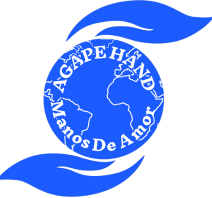Why is it increasing, and what must be done?
The face of poverty in Peru has changed, but its pain remains the same. Today, while the country shows macroeconomic progress, millions of Peruvians are falling behind in their quality of life. Poverty and extreme poverty have reached alarming levels once again, leaving a deep mark especially on Indigenous communities, high-Andean areas, and informal settlements on the outskirts of cities.
The images we see —a mother walking under the scorching sun, carrying her child and water across a barren urban desert, or a boy caring for his baby sister instead of playing— are not isolated scenes. They are daily realities for more than 9 million Peruvians.
What is the current situation?
According to Peru’s National Institute of Statistics and Informatics (INEI), monetary poverty rose to 29.0% in 2023, affecting nearly 9.8 million people. Of these, over 1.7 million live in extreme poverty, unable to meet even their most basic food needs.
The most affected regions include Ayacucho, Huancavelica, Puno, Loreto, and Cajamarca, though urban belts of Lima and other regional capitals also suffer from severe structural poverty.
Why is poverty increasing?
- Unemployment and underemployment: The economic crisis post-COVID, coupled with ongoing political instability, has weakened Peru’s job market. Millions now work informally, earning below survival wages.
- Food inflation: Rising prices for essential goods have drastically reduced purchasing power, particularly for low-income families.
- Unequal access to basic services: Many rural and peri-urban areas lack clean water, electricity, healthcare, and education.
- Climate change: Droughts, natural disasters, and crop losses further threaten food security, especially in farming communities.
What is Agape Hand doing about it?
At Ágape Hand, we don’t watch poverty from a distance — we work in it, with it, and for it.
Our organization has launched several direct-action programs in areas most affected by extreme poverty, focusing on:

Solidarity Food Banks
We distribute nutritious, essential food to hundreds of families in rural and Indigenous communities, ensuring no child goes to bed hungry.
Water for Life
We bring clean, safe water to areas with severe shortages, using sustainable solutions like community tanks and filtration systems.
Child Education and Nutrition
We promote holistic development for children through school support, healthy meals, and emotional care. Poverty doesn’t just take away food — it takes away opportunity.
Women’s Empowerment
We support women-led households with training, tools, and community support networks so they can generate income and build dignified futures for their children.
What must be done?
Fighting poverty in Peru is not the government’s responsibility alone — it’s everyone’s: citizens, businesses, social organizations, and the global community.
It’s time to:
- Increase social investment with a regional approach.
- Strengthen rural education and primary healthcare.
- Create decent and sustainable jobs.
- Guarantee fair access to food and water.
- Support grassroots efforts like Ágape Hand that work from within the heart of the crisis.
Every child carrying their sibling instead of a schoolbag.
Every mother walking miles with an empty bucket.
Every family unsure of their next meal.
They all are calling out to us.
What will we do about it?
At Ágape Hand, we’ve already started. And you can be part of this transformation.
Join us as a donor, volunteer, or ally.
Because no one should fight hunger, thirst, or neglect alone.



